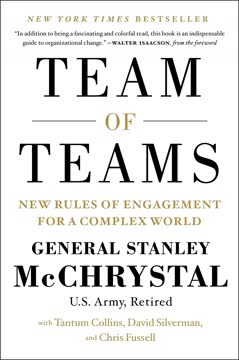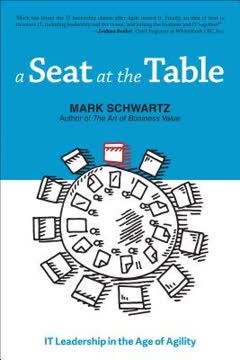Key Takeaways
1. Bureaucracy is a necessary but often misunderstood organizational structure
Bureaucracy is just a tool, a way to add formality where formality is helpful, a way to rigorously specify processes when rigor matters.
Bureaucracy serves a purpose. It provides structure, fairness, and efficiency in large organizations. Weber's ideal bureaucracy includes division of labor, hierarchical organization, rules, technical competence, impersonality, and formal communications. These elements help coordinate activities, ensure equal treatment, and create predictability in complex systems.
Common misconceptions:
- Bureaucracy is inherently inefficient
- It stifles innovation
- It's always coercive and dehumanizing
Reality: Well-designed bureaucracy can:
- Promote fairness and reduce bias
- Provide clarity in roles and responsibilities
- Capture and utilize institutional knowledge
- Support compliance with legal and regulatory requirements
2. Digital transformation requires rethinking traditional bureaucratic approaches
Digital transformation does not need to sidestep or eliminate bureaucracy. Instead, it needs to realign bureaucracy, turn it from an impediment to an ally, make it not just allow speed and joy, but foster it.
Agile and DevOps principles can be applied to bureaucratic structures. These approaches emphasize:
- Rapid iteration and feedback
- Cross-functional collaboration
- Automation of routine tasks
- Continuous improvement
Challenges in digital transformation:
- Legacy systems and processes
- Resistance to change
- Rigid hierarchies and siloed departments
Opportunities:
- Streamline approval processes
- Increase transparency and communication
- Empower employees to make decisions
- Leverage data for faster, more informed choices
3. The "Monkey, Razor, and Sumo Wrestler" techniques can overcome bureaucratic obstacles
The Monkey probes and provokes, learns how the organization really works—its politics, dynamics, people's hidden motivations—then uses those learnings as a lever to move the unmovable.
Monkey technique: Provoke and observe to understand the system and find opportunities for change.
- Create urgency around needed changes
- Use storytelling to motivate and inspire
- Be willing to take calculated risks
Razor technique: Cut away unnecessary bureaucratic elements.
- Identify and eliminate non-value-adding activities
- Simplify processes and documentation
- Focus on outcomes rather than procedures
Sumo Wrestler technique: Use the weight of bureaucracy against itself.
- Leverage existing rules and structures to achieve goals
- Build alliances and find champions for change
- Reframe objectives to align with organizational priorities
4. Lean bureaucracy focuses on reducing waste and improving efficiency
Bureaucracy requires that we apply rules universally and fairly. Its roles and rules are necessarily rigid in the sense that they are applied without exceptions and by following a formalized process. But this says nothing about how the rules are made.
Identify and eliminate waste:
- Unnecessary approvals or sign-offs
- Redundant documentation
- Excessive meetings or reporting
Streamline processes:
- Standardize common procedures
- Automate routine tasks
- Empower decision-making at lower levels
Continuous improvement:
- Regularly review and update processes
- Encourage employee feedback and suggestions
- Measure and track efficiency gains
5. Learning bureaucracy adapts to changing environments and incorporates feedback
A learning bureaucracy is bureaucracy as a storehouse of institutional knowledge, knowledge that is added to and refined over time.
Create feedback loops:
- Implement regular review cycles for policies and procedures
- Encourage experimentation and pilot programs
- Learn from failures and successes
Foster a culture of learning:
- Provide training and development opportunities
- Reward innovation and problem-solving
- Share knowledge across departments and teams
Adapt to change:
- Monitor external trends and best practices
- Be willing to retire outdated processes
- Embrace new technologies and methodologies
6. Enabling bureaucracy empowers employees rather than constraining them
Enabling bureaucracy turns out to be the Agile version of bureaucracy. It includes participation by the "users" of the bureaucracy, design for agility and learning, and fast feedback loops for iterative improvement.
Shift from control to enablement:
- Provide guidelines rather than strict rules
- Offer tools and resources to support decision-making
- Trust employees to act in the organization's best interests
Encourage participation:
- Involve employees in policy-making and process design
- Create channels for feedback and suggestions
- Recognize and reward contributions to improvement
Focus on outcomes:
- Set clear goals and expectations
- Allow flexibility in how objectives are achieved
- Measure success based on results, not adherence to process
7. Automation and self-service can streamline bureaucratic processes
Automating bureaucratic controls makes them lean and removes the annoying toil associated with them. It's a standard DevOps technique.
Automate routine tasks:
- Document approvals and routing
- Data collection and reporting
- Compliance checks and audits
Implement self-service options:
- Employee onboarding and training
- IT support and troubleshooting
- Common administrative requests
Benefits of automation:
- Reduced errors and inconsistencies
- Faster processing times
- Improved employee satisfaction
- Better data for analysis and decision-making
8. Metrics and data-driven decision-making can improve bureaucratic systems
You can treat the oversight process—the bureaucratic symphony you're composing—as an investment and, just like any other investment, see what value you're getting from it.
Establish key performance indicators (KPIs):
- Process efficiency metrics
- Customer/employee satisfaction scores
- Compliance and risk management measures
Use data to inform decisions:
- Identify bottlenecks and inefficiencies
- Prioritize improvement efforts
- Justify changes to existing processes
Create transparency:
- Share performance data across the organization
- Use dashboards to visualize trends and progress
- Celebrate successes and learn from setbacks
9. Effective bureaucracy balances control with innovation and flexibility
Bureaucracy provides guardrails and repeatable, simple processes for the administrative tasks that employees don't want to spend time on. Principles provide a flexible context that establishes the goals toward which the employees should direct themselves.
Establish clear principles:
- Define core values and organizational goals
- Communicate the "why" behind rules and processes
- Allow flexibility in how principles are applied
Create space for innovation:
- Encourage experimentation within defined boundaries
- Provide resources for new ideas and approaches
- Balance risk management with opportunity seeking
Foster adaptability:
- Build in mechanisms for regular review and updates
- Encourage cross-functional collaboration
- Develop skills in change management across the organization
Last updated:
FAQ
What's The Delicate Art of Bureaucracy about?
- Focus on Bureaucracy: The book explores the dual nature of bureaucracy, highlighting both its negative and positive aspects. It argues that bureaucracy can stifle innovation but also provide structure and fairness.
- Digital Transformation Context: Mark Schwartz discusses the role of bureaucracy in digital transformation, particularly in IT, and emphasizes adapting practices to support agility and innovation.
- Practical Frameworks: Introduces frameworks like the Monkey, the Razor, and the Sumo Wrestler to navigate and improve bureaucratic structures, making them leaner and more enabling.
Why should I read The Delicate Art of Bureaucracy?
- Insightful Perspectives: Offers a fresh perspective on bureaucracy, challenging the common perception of it as purely negative, with historical context and practical examples.
- Actionable Strategies: Provides practical advice on transforming bureaucratic structures into enabling frameworks that support innovation.
- Cultural Relevance: Equips leaders and managers with tools to navigate the complexities of modern organizational life, especially in a digital era.
What are the key takeaways of The Delicate Art of Bureaucracy?
- Bureaucracy is Inevitable: Schwartz argues that bureaucracy is a natural part of organizational life and should be managed effectively to harness its benefits.
- Lean, Learning, and Enabling: Emphasizes making bureaucracy lean, capable of learning, and enabling for employees to adapt to change while maintaining necessary structures.
- Role of Technology: Highlights how digital tools and methodologies like Agile and DevOps can reshape bureaucratic practices, automating and streamlining processes.
What are the best quotes from The Delicate Art of Bureaucracy and what do they mean?
- Mindset Change: “You can’t fight bureaucracy if you see it as an existential condition, a nightmare, an agent of dread and loathing.” This emphasizes changing our mindset about bureaucracy to manage it effectively.
- Framework for Actions: “Bureaucracy is a way to impose a structure on the world so that we can link general principles to actions.” Suggests that bureaucracy can align efforts towards common goals.
- Re-evaluation Needed: “We’ve been doing bureaucracy wrong.” Calls for a shift towards more adaptive and supportive bureaucratic structures.
What are the Monkey, the Razor, and the Sumo Wrestler in The Delicate Art of Bureaucracy?
- The Monkey: Represents the need to provoke and observe within bureaucratic systems, encouraging curiosity and experimentation for improvement.
- The Razor: Refers to Occam’s Razor, advocating for simplicity in processes by eliminating unnecessary complexity.
- The Sumo Wrestler: Symbolizes leveraging bureaucracy to one’s advantage by understanding and strategically using the rules to achieve desired outcomes.
How does The Delicate Art of Bureaucracy define good versus bad bureaucracy?
- Good Bureaucracy: Lean, learning-oriented, and enabling for employees, supporting organizational goals while allowing flexibility and innovation.
- Bad Bureaucracy: Bloated, rigid, and coercive, stifling creativity and causing frustration by focusing on rules over meaningful outcomes.
- Context Importance: Effectiveness depends on the context; what may be bad in one situation could be necessary in another.
What role does technology play in transforming bureaucracy according to The Delicate Art of Bureaucracy?
- Automation of Processes: Technology can automate bureaucratic tasks, reducing the burden on employees and allowing focus on creative work.
- Agile and DevOps Integration: Agile methodologies and DevOps practices reshape bureaucratic structures to be more responsive and efficient.
- Digital Tools as Enablers: Technology enhances bureaucratic practices, making them more effective and less cumbersome by streamlining operations.
How can organizations implement the ideas from The Delicate Art of Bureaucracy?
- Assess Current Practices: Evaluate existing bureaucratic structures to identify inefficiencies and frustrations, pinpointing where changes are needed.
- Adopt Lean Principles: Implement lean methodologies to streamline processes and eliminate waste, focusing on value delivery.
- Encourage a Learning Culture: Foster an environment valuing feedback and continuous improvement, regularly updating rules based on input and circumstances.
What challenges does Schwartz identify in transforming bureaucracy?
- Resistance to Change: Employees may resist altering established practices, fearing unknown disruptions, requiring effective communication and involvement.
- Balancing Control and Flexibility: Finding the right balance between maintaining necessary controls and allowing flexibility is crucial for fostering innovation.
- Institutional Inertia: Long-standing practices can be deeply ingrained, making change a gradual process rather than expecting immediate results.
How does The Delicate Art of Bureaucracy suggest overcoming the negative aspects of bureaucracy?
- Emphasize Empowerment: Create an enabling bureaucracy that empowers employees, involving them in decision-making and allowing flexibility in rule application.
- Implement Feedback Loops: Establish continuous feedback and learning mechanisms to adapt bureaucratic practices over time, ensuring relevance and effectiveness.
- Focus on Outcomes: Shift focus from strict rule adherence to achieving desired outcomes, prioritizing results over processes for a dynamic environment.
What specific methods or advice does Schwartz offer in The Delicate Art of Bureaucracy?
- Provoke and Observe: Technique to understand organizational dynamics and identify improvement areas by observing responses to changes.
- Shift Left: Importance of conducting validation and compliance checks earlier in workflows to reduce delays and enhance efficiency.
- Automate Compliance: Emphasizes automating bureaucratic controls to streamline processes and ensure compliance without unnecessary overhead.
How does Schwartz define a "learning bureaucracy" in The Delicate Art of Bureaucracy?
- Institutional Knowledge: Accumulates and refines knowledge over time, leveraging it to improve processes and outcomes continuously.
- Employee Engagement: Actively involves employees in proposing and implementing improvements, fostering a culture of innovation and accountability.
- Agility and Adaptability: More agile and adaptable to change, responding effectively to new challenges and opportunities in the business environment.
Review Summary
The (Delicate) Art of Bureaucracy receives mixed reviews, with an overall rating of 4.12/5. Readers appreciate the author's unique perspective on bureaucracy, combining humor, philosophy, and practical advice. Many find it insightful for understanding and improving organizational structures. Some praise the book's writing style and references, while others find it verbose or poorly structured. Critics suggest the book could be condensed and more focused. The most valuable content is often considered to be in Part 3, "The Playbook," which offers practical strategies for navigating bureaucracy.
Similar Books










Download PDF
Download EPUB
.epub digital book format is ideal for reading ebooks on phones, tablets, and e-readers.






